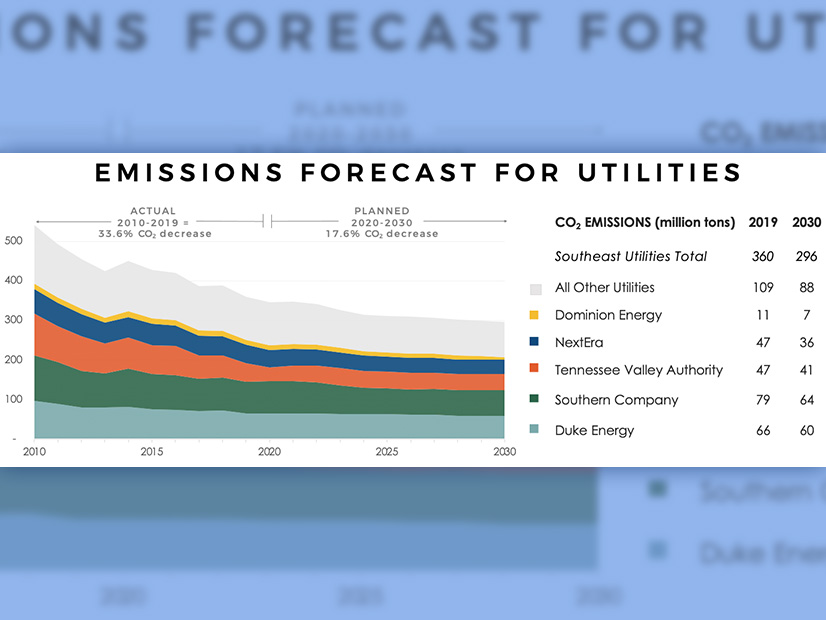Despite their recent progress in reducing greenhouse gases, Southeastern utilities are not poised to reach net-zero emissions by 2050 without more clear-cut plans to do so, the Southern Alliance for Clean Energy (SACE) said this week.
That was the key finding from SACE’s third annual “Tracking Decarbonization in the Southeast” report, which follows Southeastern utilities’ progress on carbon reduction.
SACE said while Southeast carbon emissions fell by about 34% from 2010 to 2019, emissions are projected to fall this decade by only 18% from current levels. The region on average emitted 833 lbs/MWh in 2019, compared 1,100 lbs/MWh in 2010.
Report co-author Heather Pohnan said Tuesday that most of the 18% reduction will take place in the next three or four years “with little or no action after that” planned.
“The decline in emissions is really tapering off in the near future, and that’s opposed to the sharper reductions that we’ve seen in the past decade,” Pohnan, SACE’s energy policy manager, said during a webinar to discuss the report.
Pohnan said the stagnation in reductions can be chalked up to flat loads coupled with the replacement of retiring coal plants with gas-fired generation. The region’s utilities are “stuck” in the natural gas generation era and the continuing gas boom will cause them to miss decarbonization targets “by several decades,” she said.
Climate scientists have agreed that countries must reach net-zero GHG emissions between 2040 and 2055 to limit global warming to 1.5 degrees Celsius and avert climate disaster.
“For utilities to decarbonize at the pace seen in the 2010s they will have to retire remaining coal plants at a steady pace and replace fossil gas with clean, zero-carbon energy sources like wind, solar, storage and energy efficiency,” SACE said.
SACE found that Duke Energy, Southern Co., NextEra Energy and the Tennessee Valley Authority (TVA) account for more than 70% of all carbon emissions from Southeastern power generation.
The two utilities with net-zero pledges by 2050, Duke and Southern, currently account for 40% of all emissions in the region. NextEra has made a 40% total emissions reduction commitment, while TVA hasn’t provided any official guarantees.
Even accounting for the Duke and Southern net-zero goals, none of the four major utilities “are on track to decarbonize by 2035, 2040 or even 2050,” SACE said.
Pohnan said gas generation is set to provide nearly half of the Southeast’s power production into 2030. And some of the region’s coal generation could linger until 2030 because many utilities have yet to announce retirement dates for those plants, she said.
Based on the four utilities’ existing plans, NextEra and Southern won’t decarbonize until 2071 and 2086, respectively, while Duke and TVA will keep emitting past 2100, SACE Director of Utility Reform Maggie Shober said.
“Some of the results were quite startling,” she said.
Shober said the most “impactful” thing utilities can do is register clean energy commitments and blueprints in their integrated resource plans.
“This year is particularly important because we are beginning to see some of the Southeast utilities [setting] targets on carbon reductions and even begin discussing getting to … net-zero carbon emissions,” SACE Executive Director Stephen Smith said.
Shober agreed that the decarbonization outlook in the Southeast is improving.
“This year we’re seeing a better trajectory, so we’re closer to where we need to be. We’re still pretty far off track, but there has been incremental improvement,” she said.




